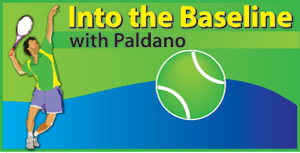ATP final, a Greek Austrian affair
London would have missed Federer, Djokovic and Nadal in the ATP final but not the class of their Tennis. Stefanos Tsitsipas of Greece beat Dominic Theim of Austria, in the final last Sunday to win the year end ATP Professional Men’s Tennis title of 2019. It was an exhibition of Tennis at a different level to witness.
At present the Tsitsipas is ranked six in the world. Just twelve months ago he won the ATP New-Gen title in Milan. New-Gen is a platform that was launched to mature young talents into the Open professional field. This ATP initiative has worked out well for them. The project has been well designed and engineered. Today there are four under 21 players in the top Ten of the world. Tsitsipas bridged the gap of New-Gen Tennis standard to that of Open Professional Tennis well within a year. He is the first to win ATP Men’s title at 21 years of age after Llayton Hewitt of Australia, about 16 years ago at 20.
Flawless Tennis
Tsitsipas and Theim got to the final with their flawless tactical power play. Both had speed in their court coverage movements and power generating stoke making ability from all positions of the court. Their excellent ball contact is derived from the comfort in coordination even at very high speeds. Every stroke of their Tennis has the potential to hit winners. Among the eight finalist of the ATP final, the margin between winner and loser was very small. Their playing form of the day decided the outcome.
For the stroke making puritans it must have been a pleasure to see both the finalists played single handed backhand and worked very efficiently at net as well. They are players who evolved on Hard courts. This made them generate immense pace and still look natural, coordinated, rhythmic and elegant. Roger Federer lost to Tsitsipas in the semi-final. Djokovic and Nadal did not reach the semi-final. It shows the intensity of the competition at the 2019 ATP final.
Rising star of 2019
Tsitsipas’s ability featured prominently from the very first Grand Slam of this year in Australia. In the middle of the year fatigue slowed him down. Talking of physical breakdown, 2019 will be an eye opener to the professional bodies. The question that they will have to address is, how much Tennis should be made compulsory to be ranked.
The demand to host professional events is ever increasing in mega cities and they all want top Ten players to appear in their draw. Men’s Tennis has solid eleven months of back to back weekly events from January to November. Tisitsipas’s and Theim’s exhibition in London came surviving these stressful eleven months.
Smart competition structure
Historically good Tennis came only from the country where the population is large and the game is most popular. This has changed in the last twenty years. Roger Federer is from Switzerland with small population, it is the same with Tsitsipas. The last well known player from Greece is Nikola Kalogerpolos, he won the French Open in the 70’s retired in 78. Bagdatis is also from that region, holding Cyprus citizenship. Australian Nick Krygios’s family is also from Greece.
Not having a large player base is not an issue for a player to develop to be world beater in Tennis anymore. Many countries focus on large player base. In effect it is drowning their good talent from emerging. In women’s Tennis, Canada and Australia with small population are prominent in top ten of the ranking. Canada focuses on a small talent pool and uses the tournament structure and design of WTA and ATP for global Tennis. A smart move for small countries like Sri Lanka to copy.
 While the stroke making can come even in a late starter, game maturity needs ten plus years to stabilise and perform in higher intense competition. This is another secret for professional Tennis.
While the stroke making can come even in a late starter, game maturity needs ten plus years to stabilise and perform in higher intense competition. This is another secret for professional Tennis.
Revival year of Davis-Cup
Spain won the new format 2019 Davis Cup title beating Canada in the final. The event was played in Madrid, Spain. There were 18 teams playing round Robin in 6 groups to qualify into the quarter finals. From quarter finals it was knock out format. The eight quarter finalists were Serbia, Russia, Great Briton, Australia, Canada, Germany, Argentina and Spain. The new format was very inviting and the three match tie in best of three sets format was not too strenuous on the players. Tennis skill was at test and not the physical endurance.
Rafael Nadal was the man who carried Spain through the event. The hard courts of Madrid with its splendid arena provided all the impetus to revive the Spirit of Davis Cup it had from 1900. The round robin gave a lot of good Tennis and excitement. Unlike the early years Davis Cup, it has become a sporting carnival to attract younger spectatorship.
The Davis Cup became redundant replica of the last century in the professionally dominated world in recent times. Most of the countries could not even sign in their best to play for them. The new format of Davis Cup final was progressive to be exciting. One could firmly say the event has been revived. Those attended as spectators were able to see top twenty ranked players performing in one place. Thrilling!
-George Paldano, Int. competition player; Accredited Coach of German Tennis Federation; National coach Brunei, Sri Lanka; Davis-Cup, Federation-Cup, captain/coach. geodano2015@gmail.com


